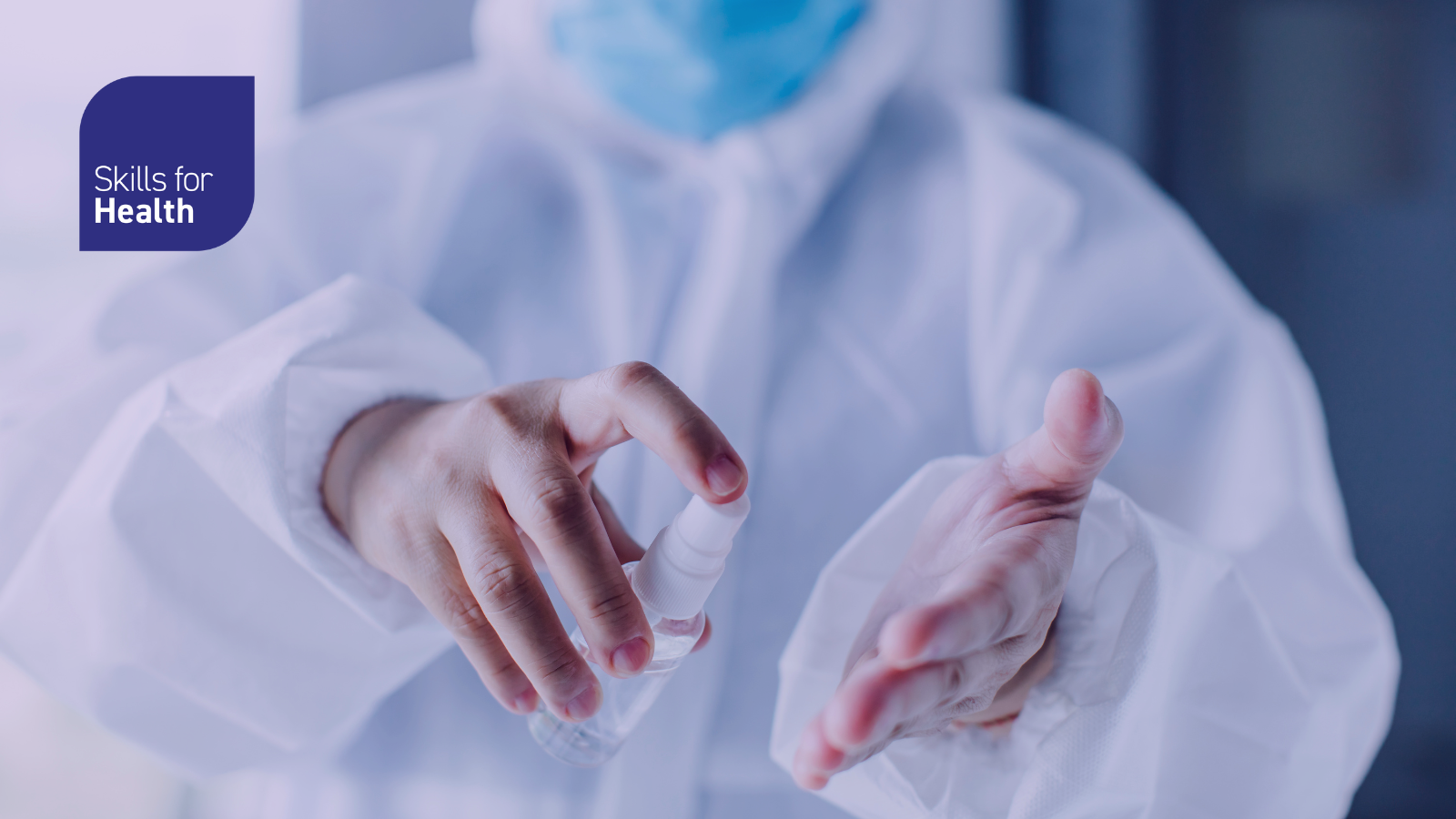
| 16 October 2024
Infection prevention and control (IPC) is a crucial part of our healthcare systems. The sole aim is to reduce and prevent the transmission of infectious diseases, ensuring that people stay healthy within health facilities.
Today, we’ll introduce some essential practices and knowledge in infection control to help aid healthcare workers within their workspace.
Understanding the chain of infection
Having an understanding of how infections can be spread is essential knowledge for effective IPC. For this, we can highlight the chain of infection in six simple links, and acknowledge how to break these to prevent infection-based issues.
Pathogen
A pathogen is a germ that can cause diseases, such as the flu, common cold, COVID, and stomach bugs. A common way to break this link would be personal hygiene, and isolation. This will help prevent germs and diseases from spreading from person to person. It’s also suggested that when undertaking a course of antibiotics, it is completed as this will reduce the chance of the pathogen of becoming resistant to treatment in the future.
Reservoir
A reservoir is a place where a pathogen can live, this could be an environment, certain foods and drinks, or a person. This link can be broken with regular decontamination to eliminate or reduce the number of pathogens on a surface. For example, cleaning a surface after a person with a cold has touched/contaminated, or isolation of a person with an infectious disease like the flu.
Portal of exit
The portal of exit link is where pathogens can leave the reservoir stage, for example, a cough or sneeze from an infectious person. This is prevented by covering the mouth or nose when coughing and sneezing or wearing the correct PPE when dealing with patients. Within your workplace, you can also have dedicated toilets that have access to vomit bowls, to reduce the spread of other infections.
Means of transmission
This link is focused on how pathogens are moved from one place (or person) to another. This can be from touching hands, touching a contaminated surface, or through the air or body fluids. Many of these transmissions can be prevented by thorough hygiene, by effectively washing hands or using sanitiser. It’s also good practice to have good ventilation within your workspace to help dilute air-related viruses.
Portal of entry
A portal of entry is how a pathogen can enter another person’s body. This could be through breathing, a wound or an invasive device. This is preventable by using the correct PPE (personal protective equipment), which can range from masks, aprons, and eye protection. Infection can also be prevented through the sterilisation of tools and equipment.
Susceptible host
A susceptible host refers to an individual who’s at a higher risk of infection due to various factors, such as age, weakened immunity, or pre-existing health conditions. To prevent susceptible hosts from getting ill, one of the main preventions is vaccinations against harmful illnesses.
Healthcare Hygiene
Hygiene in healthcare is critical to preventing infections and ensuring patient safety. Healthcare professionals must adhere to strict hygiene protocols, such as using personal protective equipment (PPE), disinfecting surfaces, and following infection control measures, to protect both patients and staff.
Hand hygiene
When washing hands, you should always:
- Use liquid soap when washing hands
- Use tepid running water
- Dry your hands with paper towels, and place used towels into a waste bin.
- Avoid using nailbrushes (they can damage the skin, creating a portal of entry for an infection or disease).
Coughing and sneezing hygiene
To reduce the transmission of infections from coughing and sneezing, you should:
- Always cover your nose and mouth and use disposable tissues
- Dispose of all used tissues in a waste bin
- Make sure to wash hands after coughing, sneezing or using tissues, so you maintain hand hygiene
- Keep hands away from your eyes, nose and mouth after coughing or sneezing.
Personal protective equipment (PPE)
PPE should always be used when assessed as necessary to reduce the risk of transmission of pathogens and other risks associated with care tasks. Regarding PPE, you should:
- Wash hands before putting on and after taking off PPE
- Change PPE if damaged or contaminated
- Store PPE in a clean, dry and covered container or dispenser
- Discard PPE in a waste bin after use.
Waste management
Waste management is vital in healthcare, as you need to ensure waste doesn’t pose a risk of injury or infection to yourself, other workers, or patients. Along with it being a safe working practice, effective waste handling provides additional advantages, such as cost savings and reducing the environmental impact of waste disposal.
Waste principles
- Make sure to place waste in appropriate waste bags
- Don’t put sharp objects in waste bags, to prevent bags from splitting or breaking
- Always maintain hand hygiene after handling waste
- Always book waste collection through a licensed waste contractor
These are just a few ICP practices to maintain within your workplace. This is vital knowledge to start using within your teams, helping to prevent and reduce the transmission of infectious diseases helping to ensure people stay healthy within your care.
If you want to learn more about infection prevention and control, we provide high-quality eLearning courses that offer different levels, as well as clinical and non-clinical ICPs.
View our ICP courses
